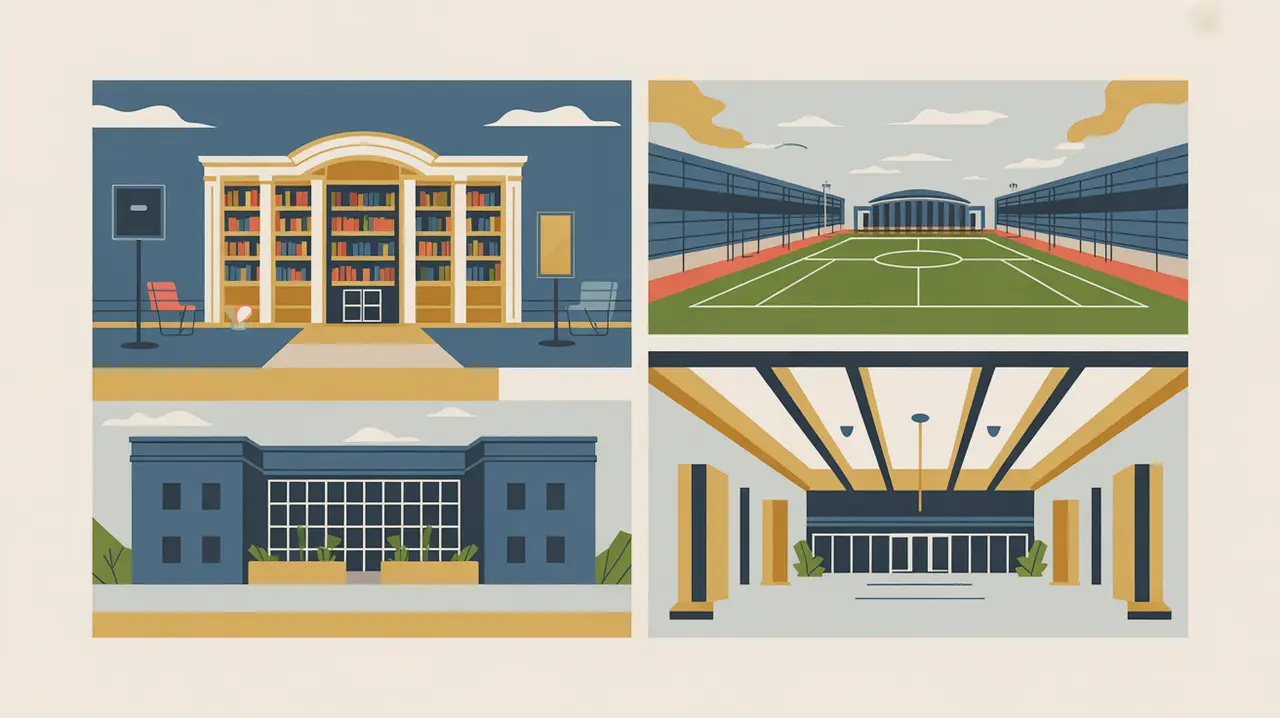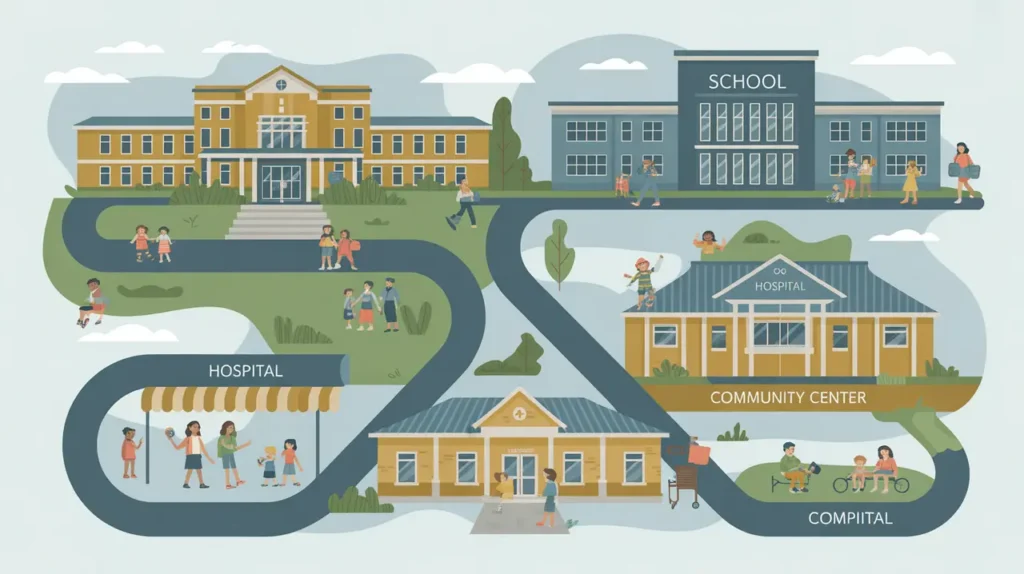Importance of Community Facilities
Community facilities are vital for providing shared spaces where people can access services, gather, and build social connections. In international development, they enable delivery of education, health care, recreation, and cultural activities, often serving as anchors for inclusive growth and resilience. For nonprofits and social innovators, community facilities are essential platforms for mobilizing resources, strengthening social capital, and creating environments where proximate actors can convene, learn, and thrive together.
Definition and Features
Community facilities refer to publicly accessible buildings and spaces designed to serve the collective needs of a community. Their defining features include:
- Multi-Functionality: used for education, health, recreation, cultural, or civic purposes.
- Accessibility: open to all, often at low or no cost.
- Social Infrastructure: strengthening networks, cohesion, and local identity.
- Public 3Private Role: often funded or managed through a mix of government, nonprofit, and community resources.
How this Works in Practice
In practice, community facilities may include libraries, health clinics, schools, sports centers, cultural halls, and multipurpose community centers. For example, a rural development project may establish a community hall that doubles as a training venue, health outreach site, and safe space for women and youth. Nonprofits often play a role in equipping and managing such facilities, while governments ensure integration into service delivery systems. Barriers include inadequate funding for maintenance, inequitable access, and poor alignment with community priorities.
Implications for Social Innovation
Community facilities have strong implications for social innovation because they serve as physical platforms where collaboration and learning take place. They enable participatory governance, host incubators for local enterprises, and provide spaces for cultural and civic expression. For proximate actors, community facilities are tangible assets that transform proximity into opportunity, ensuring that resources and relationships can be mobilized locally.







